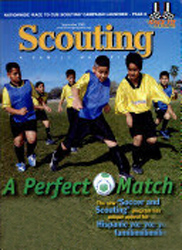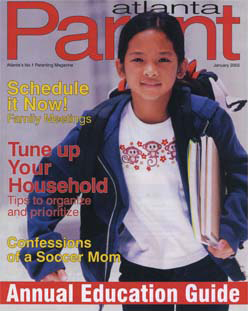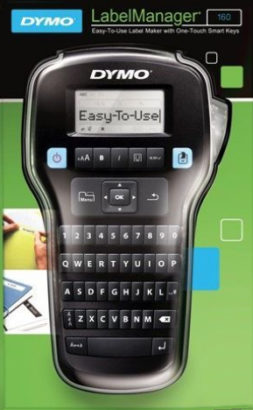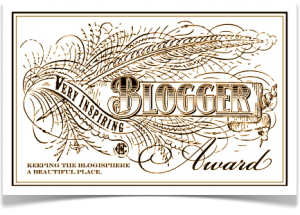The Mass-Media Madhouse
(Press-Central For Handy Soundbites, Useful Info,
And A Good Wet-Your-Pants Laugh)
Home / The Mass-Media Madhouse
(Press-Central For Handy Soundbites, Useful Info,
And A Good Wet-Your-Pants Laugh) / Random PR Quotes From
The Media's Favorite Organizational Smart-Ass
Random PR Quotes From
The Media’s Favorite Organizational Smart-Ass
Journalists seem to like what I say about organizing/simplifying. (God knows why, with the mouth on me — I guess a little profanity keeps “chained-to-your-desk” interesting.) Of course after toning the language down, I’m never quoted as accurately as I’d like. But at least no one can accuse me of a boring interview!
My focus is on psychological revelations and fundamental principles which make every aspect of daily life easier, rather than techniques that only apply to one aspect of clutter — but I also like to throw in weird little hacks rarely mentioned in most “categorize-and-systematize” articles. Here are my favorite bits of media stardom — and hey, if you need any snark-laden quotes for your next publication, gimme a holler!
Readers Digest — Clutter Free Stress Free
 To complement Michael J. Fox’s tainted-heroin-driven tremors and the looming threat of nuclear war, I was asked to contribute a few insights about why folks have such a hard time letting go of clutter and chaos. (Comic relief, I guess?) My first illustration had to do with using piles of extraneous stuff as an excuse for not dealing with other life issues:
To complement Michael J. Fox’s tainted-heroin-driven tremors and the looming threat of nuclear war, I was asked to contribute a few insights about why folks have such a hard time letting go of clutter and chaos. (Comic relief, I guess?) My first illustration had to do with using piles of extraneous stuff as an excuse for not dealing with other life issues:
“For example, bills and statements may be piling up because you don’t want to confront money woes,” says Professional Organizer Ramona Creel. “Some people think, ‘If I get organized, I’ll find out my finances are in horrible shape, then I’ll have to change my spending habits. I sure don’t want that!” Similarly, a client of Creel’s who was selling her house kept it in such unsightly condition that realtors refused to show it. “She didn’t actually want to move. The mess was her way of staying put.”
And the second bit of Ramona-brilliance they chose to quote? A reality check about memorabilia:
While it’s natural to save mementos of a loved one who’s recently died or left home, keeping too much can prevent you from moving forward. “One client whose kids had gone off to college held onto every outfit they’d ever worn,” says Creel, “then wondered why being an ’empty nester’ was so hard. Once she let go, she began truly enjoying that next phase of her life. What people don’t understand is, memories don’t live in these objects. All that stuff can get in the way, keeping you stuck in the past.”
Better Homes & Gardens — In An Orderly Fashion
 I was interviewed for a piece on creating organized kitchen environments — where better to start than with a “clutter-reduction” admonishment?
I was interviewed for a piece on creating organized kitchen environments — where better to start than with a “clutter-reduction” admonishment?
“Pay attention to what you use and what you don’t,” recommends Professional Organizer Ramona Creel. “Clean out useless items regularly, and keep non-cooking stuff (which typically eats up as much as a quarter of your cabinet/drawer space) out of the danged kitchen!”
Elaborating on the subject of “paying attention:”
“It’s all about awareness — of what you own, what you use, the way you move while preparing food. Be cognizant of how you do everything you do, and why you do it that way. Going on autopilot, not thinking about what’s being put where — that’s how clutter takes over,” Creel says.
And finally, a practical action that any reader could immediately take to eliminate the stacks and piles:
For packrats, tossing something useless into the trash can be a challenge — but it’s one of the keys to keeping a clutter-free kitchen. Professional Organizer Ramona Creel suggests the following: “Try to pick 10-20 items you can pitch quickly and without regret — like a dried-up pen or a moldy orange or a dead battery. This has a psychologically-motivating effect. It helps you realize how painless ‘letting go’ can be, easing you into harder decisions about what to keep and what to toss/donate/recycle.”
Scouting — Helping Children Learn Clutter-Control Skills
 Having been a gold-award-winning Girl Scout myself, of course I was happy to answer the door when the Boy Scouts Of America came knocking, asking for decluttering tips to include in their magazine. But first, I had to convince them that kids are actually capable of organizing:
Having been a gold-award-winning Girl Scout myself, of course I was happy to answer the door when the Boy Scouts Of America came knocking, asking for decluttering tips to include in their magazine. But first, I had to convince them that kids are actually capable of organizing:
“You can make clutter control meaningful to a 6-year-old or 16-year-old,” says Professional Organizer (yes, there are such people) Ramona Creel.
Then I was asked what the key to creating child-sized order is:
Picking up, putting away component skills of clutter-control. While organizing “is a dynamic activity that needs to flow and change as a person does,” says Creel, it is “mostly about building habits. True organization doesn’t come from a ‘clean sweep’ weekend, but from developing small daily routines that keep clutter at bay.”
At this point it seemed wise to involve the parents:
Creel believes that decluttering can be a family affair. “Have a 15-minute period each AM and PM during which kids and parents alike are expected to put things back where they belong,” Creel says. “You can even make organizing fun. Let them design their storage systems themselves — a child is a lot more likely to keep his room organized if he has a say in where everything goes.”
A bit more about giving children autonomy over their space:
“Neat has to do with how things look, and organized has to do with how things function,” Ramona Creel explains. “Parents often get so caught up in having their kids’ rooms look ‘neat’ that they forget the more important issue is how the space functions.” To that end, you “just have to ask the right questions,” she says, including:
- Can your child find the toy, item of clothing, or book she is looking for when she wants or needs it?
- Is the space set up to support the activities your child engages in regularly?
- Does it help him engage in those activities efficiently and with less frustration?
- Have you set up storage that makes it easy to put things back when your child is done with them?
And a final reminder about the importance of awareness, even when dealing with children:
“The key to being organized,” says Creel, “is making conscious decisions. Most of the clutter adults accumulate (too much stuff, an overloaded schedule, papers everywhere) arises because we don’t make well-reasoned choices about how we are going to function. The same is true with kids.”
New Scientist — How Interruptions Can Destroy Your Day

Being the empirical-thinker-and-fact-chasing-pain-in-the-ass that I am, I was thrilled to be quoted as an expert source in a scientific publications examining a study on how interruptions affect your brain. Let’s start with a couple of fascinating stats:
When researchers at UC Irvine set out to quantify the interruption problem, they shadowed a dozen information workers for three days — and found that on average, they got just three sustained minutes of work in before being diverted. “I was shocked,” says Gloria Mark, who ran the study. It was estimated that the cost of these breaches to the US economy is $588 billion a year — 6.5 times as much as the estimated cost of back pain, according to a 2004 study at Duke University.
That’s when I was asked to chime in, sharing my insights about our inability to draw healthy boundaries:
Edward Hallowell thinks the solution comes down to us, whether we use technology wisely. “We haven’t mastered it — it has mastered us,” he says. “We need a new etiquette.” Professional Organizer Ramona Creel agrees. Many of her clients know there’s a problem — but they want to blame something tangible, like a filing system or their computer, rather than consider that they might need a behavioral change. “Really, the issue is their mental game,” she says. “You have to respect your time before others will.”
The thing I love about Aussie publications, is they let you be more brutally honest than American ones:
“If you’re going to manage your time, you’ve got to have backbone enough to be honest with people,” she says. “Tell them you really don’t have a minute, if you don’t. You do no one (yourself include) any favors by lying.” Creel offers some practical tips for implementation, “Take a lesson from Ms. Picard’s computers, and apologize while you’re saying “no.” And like Mr. Horvitz’s Bestcom, you can offer to schedule a meeting for another time, or have a regular open-door period each day. If you are interrupted, take a moment to note where you left off, so you have less trouble getting back on track. Finally (and this will be painful) have the guts to turn off your e-mail, phone and instant messenger until the job is done.”
And the obligatory bullet-point tips list:
- Put up a “do not disturb” sign or obvious signal that you are busy. Insist that colleagues respect it.
- Rearrange desk to face away from the flow of people, so no one can catch your eye.
- Always stand up to talk to someone who is interrupting you, so they know what they’re doing.
- Put a big clock in plain view of visitors and check it while you are talking.
- If an interruption takes more than two minutes, add it to your to-do list and return to the task at hand.
- Keep a notebook open and write down what you are doing as soon as you are interrupted.
Atlanta Parent — Household Tune-Up
 My advice has been featured regularly in the ATL’s favorite publication for southerly parents — this article focuses on new year’s decluttering:
My advice has been featured regularly in the ATL’s favorite publication for southerly parents — this article focuses on new year’s decluttering:
How many times have you said, “Someday I’m going to organize the basement? Or the closet? Or the pantry?” For most of us, that someday never seems to come. For Professional Organizer Ramona Creel, that “someday” comes every January. “It’s is a great time to ask what unnecessary baggage you can let go of as you move into the new year — how you can make life easier, more orderly, less stressful.”
A disclaimer before you dig in:
“The biggest mistake is trying to tackle everything once,” Creel warns. “You didn’t create this mess overnight — it’s not going away overnight.”
Some tips for starting small:
“You want to declutter the kitchen? Begin with a silverware drawer. Then move on to a cabinet. Then the pantry. One piece at a time — you’ll have the whole room (and eventually the entire house) in order.”
Paired with learning how to reward yourself for a job well done:
Creel also recommends focusing on what you’ve accomplished, not all you still have left to do. “When you finish organizing a space, pat yourself on the back before moving on to that next area. Most folks beat themselves up over what they haven’t achieved, rather than appreciating what they have — no wonder they get frustrated and throw in the towel before reaching the finish line!”
The importance of asking for help:
Going through old stuff doesn’t have to be drudgery. Creel suggests inviting a few friends over to help you out. Plan a labor-swap. Play music, serve food, and make a party out of it. “Having someone there working alongside helps keep you on track and motivated. You’ll be less likely to give up,” says Creel.
On being willing to ask the hard questions:
Organizing is more than cleaning up, it’s cleaning out. “Ask yourself, ‘Why am I hanging onto this?'” suggests Creel. “If you don’t have a good reason, let it go.” When you get stuck, it may be time to bring in an objective third-party. “Working with a Professional Organizer is like having a trainer at the gym. We’re building that decision-making muscle, instead of your biceps.”
Fresh Home — Closet Smarts
 I was asked to pitch in my two-cents’-worth for this article on closet organizing — so of course readers got at least a buck-fitty (if not more) in value. Let’s start with a pithy aphorism about modern storage:
I was asked to pitch in my two-cents’-worth for this article on closet organizing — so of course readers got at least a buck-fitty (if not more) in value. Let’s start with a pithy aphorism about modern storage:
A closet is a contradiction — the smallest space in the house, but the biggest repository of our stuff. The first place we go to look for that lost jacket or missing shoe, but the last place we think to clean or organize.
And therein lies the problem. “We live our lives out of our closets — it’s no place to have mountains of stuff lying around,” says Professional Organizer Ramona Creel. “Eliminating excess is the first step toward never hunting for that long-lost pair of jeans again.”
Continuing on with a look at random crap you intend to use “someday:”
The biggest space-hogs are those well-intentioned “someday” items — clothes you can’t wear right now, accessories that aren’t in style anymore, shoes that need repair. “If you only kept what works, what fits, what makes you look and feel good right now, closet clutter would be a thing of the past,” says Creel.
Of course ya gotta unload before you can organize:
You can’t improve your closet when it’s filled. So empty it — completely. Hauling everything out serves three purposes. It gives you a good look at the actual space and storage (rods, shelves, and so forth) you have to work with. Second, it gives you a chance to clean a space that rarely gets cleaned. Third, once your stuff is spread out on the floor or bed, it’s easier to identify items you no longer need or want.
Central Florida Family — Corral The Clutter
 This teeny specialty publication offers a great example of a fabulous interview that dug deeper than just “gimme tips for cleaning out:”
This teeny specialty publication offers a great example of a fabulous interview that dug deeper than just “gimme tips for cleaning out:”
“Organized at work doesn’t mean organized at home, and vice versa.” Professional Organizer Ramona Creel says it’s impossible to say who among us is the disorganized type. “I have clients who are absolutely brilliant, keeping order just isn’t their forte. People need to understand it’s not a character flaw — it’s a skill they haven’t yet acquired.”
Some people are what Creel calls “situationally-disorganized.” “Families overwhelmed by a death or illness can quickly spiral into disorder,” Creel says. “Even a lengthy vacation, a stressful work project, or a home renovation can be enough to cause chaos.”
On how I work with clients and why I do it that way:
“Folks get overwhelmed, looking around and seeing so many parts of their life that need attention,” says Creel. “I like to start by asking what single area is causing them the most pain. That’s where we begin, because fixing that problem is going to have the greatest positive impact.” Creel helps her clients focus on one organizational challenge at a time. “I know which techniques will be most effective for their lifestyle,” she says. “My job is to envision solutions they couldn’t see on their own. But I’m also there to cheerlead — to help them accomplish something significant and meaningful during that organizing session.”
Style — Getting Straight
 I rolled up my sleeves and tackled a hands-on project in the name of sweat-equity PR — here’s what it looked like from the client’s POV:
I rolled up my sleeves and tackled a hands-on project in the name of sweat-equity PR — here’s what it looked like from the client’s POV:
Seeming wise beyond her years, Creel surveyed my junk closet from hell and assured me with a breezy wave of her hand that she’d seen much worse. Next, she shared a few humorous stories that I feel sure were designed to put me at ease. I liked her for that. Then she got to work.
Why you want to dump the whole damned storage space out:
Creel explained that rather than do a shelf at a time (my method), she preferred to empty the entire closet. “If you do it piecemeal,” she says, “you’ll have to disrupt finished areas to add items found elsewhere.”
The organizing process in action:
While she worked, Creel kept me busy with small tasks that I could handle. My overflowing shopping bag collection was jamming one entire corner of the closet. Creel weighed in, suggesting that we set a spatial limit of how many I could actually keep. I was handed the largest bag and told that when it was full, my collection was complete — if I brought another bag home, an old one would have to go.
Building rapport, making progress:
The comfy dialogue we fell into made the time pass quickly. As we made the three piles that Creel suggested (keep, get rid of, and not sure), I could see the space taking shape in front of my eyes. And space is the operative word here — there was so much of it now, I found it hard to believe! For the next few days, every time I walked past the closet, I had to open it and peek. It is an amazing transformation.
Atlanta Magazine — Closets As Cache
 I was invited to participate in an article on household storage that included advice from real estate appraisers, custom closet designers, and Professional Organizers — they also interviewed a very satisfied client:
I was invited to participate in an article on household storage that included advice from real estate appraisers, custom closet designers, and Professional Organizers — they also interviewed a very satisfied client:
Talking with people who’ve organized their closets is a lot like talking with successful dieters. After shedding piles of unwanted clothes and clutter, they’re zealous about staying on an organizing regimen. “I just couldn’t take it anymore,” says Melba Seals.
Even with her clothes spread among four different closets, “it looked like everything was turned upside-down.” Now almost a year after Professional Organizer Ramona Creel put her back on the straight and narrow, Seals laughs. “My husband said, ‘It won’t stay that way.’ But it’s just like it was when Ramona left.”
Screw the shoeboxes:
Seals says the best advice she got from Creel was to toss the shoeboxes. “I would’ve never thought to throw away all those ratty cardboard shoeboxes,” says Seals. “Turns out all they were doing was taking up space and keeping me from seeing what I owned. Now people look at me like I’m crazy when I buy shoes and say, ‘Keep the box.” But my closet is so much happier with everything in clear plastic organizers.”
Starving to death at a banquet:
Creel recalls working with a television reporter who complained about her business attire. After they culled everything that was damaged, out of style, or too casual, they realized the journalist only had three work outfits. “She owned next to nothing that was appropriate for on the air,” says Creel. “Yet every square inch of storage was absolutely crammed.” According to Creel any item in your closet should be in currently wearable condition — if not, get it altered, get it repaired, find something to go with it, or get rid of it.
Allure — Cosmetic Cleanup
 You might wonder what the hell I’m doing in a magazine like this — most assuredly not offering fashion advice! Nope, my job was to provide a few simple tips for better organizing beauty products. First, the basics:”
You might wonder what the hell I’m doing in a magazine like this — most assuredly not offering fashion advice! Nope, my job was to provide a few simple tips for better organizing beauty products. First, the basics:”
Divide your cosmetics by category. Label one container for eyes, one for lips, one for skin — then within each, group similar color palettes together (keeping evening products separate from day for easier access).
Next, we move into more complicated territory (insert eye-roll here):
“For quick reference, stick individual lipsticks cap-first, labels-pointed-out into a countertop divider-tray or hanging rack,” advises Professional Organizer Ramona Creel. “Reading through a bunch of labels is faster than uncapping each lipstick, to see which color is which.”
And really, who wants to cure cancer when I can offer “packing for travel” advice instead?
The horde of makeup and skincare samples that looks so messy and goes unused in favor of your larger everyday containers? Creel suggests packing miniatures in a ready-to-go travel bag for use on the road.
Dymo — Make The Most Of Your Labeler
 Of course I was excited as hell when my favorite adhesive taxonomy company contacted me for a joint project — creating an insert to go in their product packaging that offered tips for better utilizing their label-makers in your organizational efforts. Again, with the interesting statistics:
Of course I was excited as hell when my favorite adhesive taxonomy company contacted me for a joint project — creating an insert to go in their product packaging that offered tips for better utilizing their label-makers in your organizational efforts. Again, with the interesting statistics:
Whether it’s a cluttered closet, a disheveled spice cabinet or an overflowing garage, most people could use help organizing some aspect of their homes. In fact, according to a recent poll conducted for DYMO by Harris Interactive, 95% of Americans admit that they feel some areas of their home could be better organized and most (88%) would be more likely to organize if there were a quicker, easier way to do so. Studies also show that living in a cluttered home can have a negative effect on your life — including increased stress, irritability, and time wasted searching for lost items.
This is where I come in, with my sparkling personality and handy-dandy organizing techniques:
“Properly identifying items with an easy-to-use labeler can make organizing your home much easier,” said Professional Organizer Ramona Creel. “By simply tagging containers, drawers, cabinets, and shelves with a label indicating what is stored there, you can save hours throughout your day.” Ramona has teamed up with DYMO to offer some tips and tricks to give a jump-start to your next organizing project:
- Leftovers can be forgotten quickly. Label containers in the refrigerator or freezer with the item and date put away so there’s no surprises.
- Bulk food purchases can save a lot of time and money. Transfer to air-tight tupperware, and label containers of bulk food items (flour, sugar, pasta) for easy identification.
- Anything helps when putting away groceries and supplies. A simple label on pantry shelves (canned items, cereals, drinks) means other family members know exactly where everything goes.
- Identify fuse box switches with labels that note what switch goes to what room. This will make it much easier to find the right one in case of a blackout or emergency.
- Bundle multiple cords together, attach to a multi-outlet power strip, and tag each, indicating which plug goes to which gadget. This will help you make areas look neater than different wall outlets.
- Properly label closet storage bins with all content to eliminate having to shuffle through boxes to locate items. Also consider labeling shoe boxes with style and type for easy storage.
- Label garage shelves and cabinets with the supply category stored there — paint, car care, gardening. Label toolboxes, pegboards, and hardware containers for easy identification and safety.
- Get kids involved in the organizational process by labeling drawers so they know where to put shirts, pants, underwear. Label containers of small children’s toys (army men, jacks, cars) for easy clean-up.
Copyright 2014 RamonaCreel.com
 PS: Wanna instantly rack up some serious virtual cred? I've made it easy for you to share this content with your social networking friends, e-mail it to your peeps, or republish it in your own blog (thereby showing off how smart you are) with these links.
PS: Wanna instantly rack up some serious virtual cred? I've made it easy for you to share this content with your social networking friends, e-mail it to your peeps, or republish it in your own blog (thereby showing off how smart you are) with these links.
(iCopyright widget here)
"I Have More To Say About This... No Surprise!"
If you would like to reprint this page, please contact me





